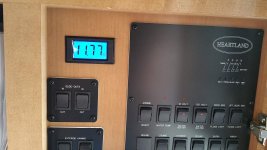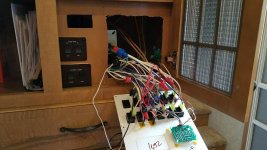ILH
Well-known member
I've been trying to leave my fridge running between two-week trips, so that I don't have empty the contents. Recently I added a second battery and removed the fuses to items that draw current (such as gas detector, TV booster, etc.). I was able to last two weeks without a problem.
Since I hadn't pulled the fuses until the second week, it seemed to I might be able to make three weeks if I pulled the fuses on the first day.
Today I parked the RV after returning from the long weekend - and pulled the fuses. My next trip is in tree weeks to the NY rally in Verona. Let's see if the fridge will make it!!!!
Since I hadn't pulled the fuses until the second week, it seemed to I might be able to make three weeks if I pulled the fuses on the first day.
Today I parked the RV after returning from the long weekend - and pulled the fuses. My next trip is in tree weeks to the NY rally in Verona. Let's see if the fridge will make it!!!!


